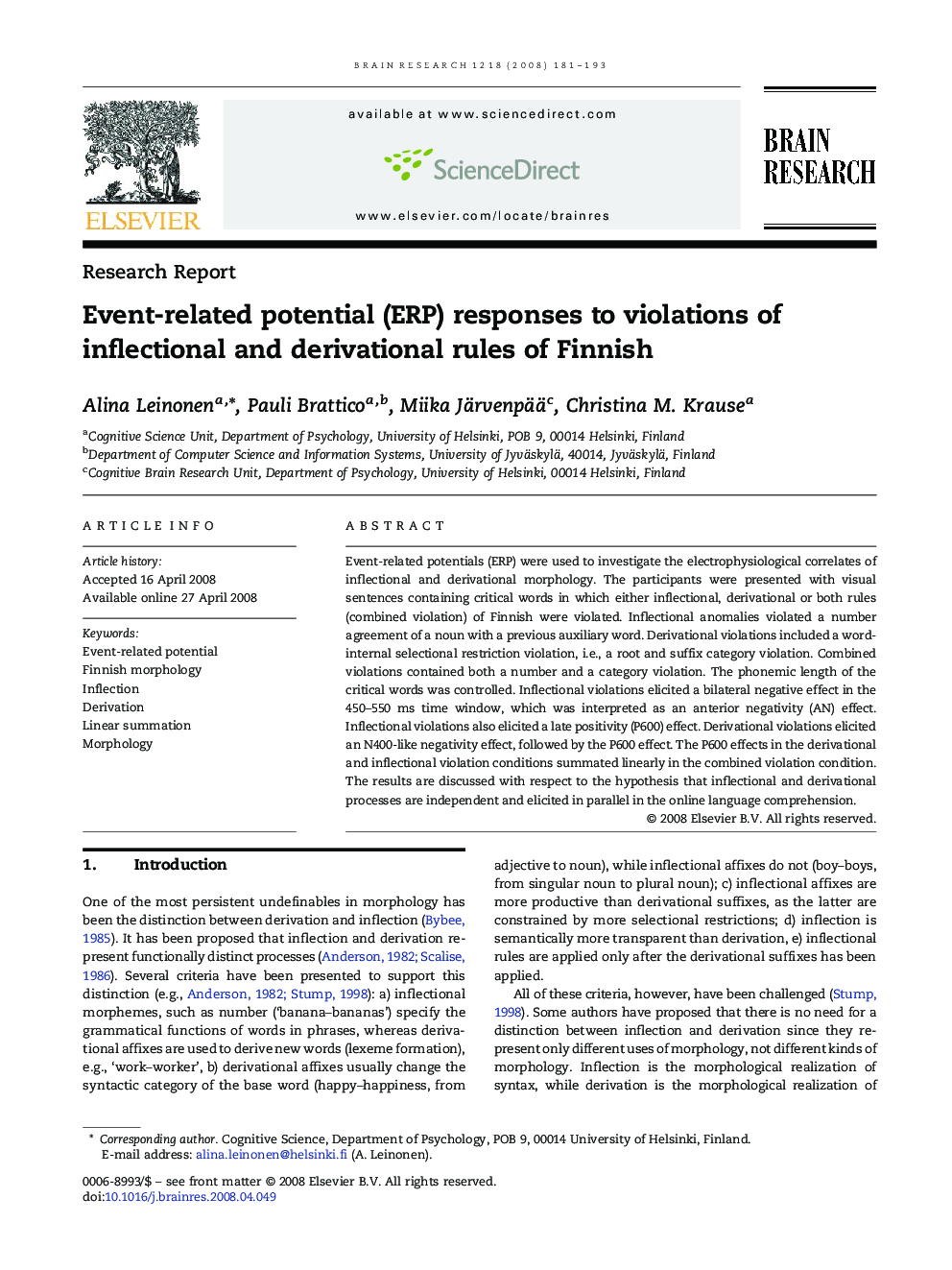| Article ID | Journal | Published Year | Pages | File Type |
|---|---|---|---|---|
| 4329595 | Brain Research | 2008 | 13 Pages |
Event-related potentials (ERP) were used to investigate the electrophysiological correlates of inflectional and derivational morphology. The participants were presented with visual sentences containing critical words in which either inflectional, derivational or both rules (combined violation) of Finnish were violated. Inflectional anomalies violated a number agreement of a noun with a previous auxiliary word. Derivational violations included a word-internal selectional restriction violation, i.e., a root and suffix category violation. Combined violations contained both a number and a category violation. The phonemic length of the critical words was controlled. Inflectional violations elicited a bilateral negative effect in the 450–550 ms time window, which was interpreted as an anterior negativity (AN) effect. Inflectional violations also elicited a late positivity (P600) effect. Derivational violations elicited an N400-like negativity effect, followed by the P600 effect. The P600 effects in the derivational and inflectional violation conditions summated linearly in the combined violation condition. The results are discussed with respect to the hypothesis that inflectional and derivational processes are independent and elicited in parallel in the online language comprehension.
